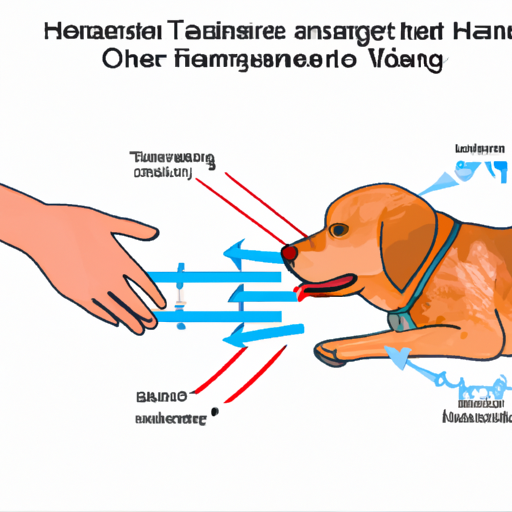As a dedicated caregiver to your furry friend, you may have noticed that your dog’s head feels warm when you pet her. This can be alarming and often leads to questions about whether your dog is unwell. In this article, we will explore the possible reasons behind this phenomenon, and also address some frequently asked questions about this topic.
H2: Understanding Your Dog’s Temperature
Firstly, you must understand that dogs have a different body temperature compared to humans. While our normal body temperature is around 98.6°F, a dog’s typical body temperature ranges from 101 to 102.5°F. This discrepancy might make your dog’s body feel warm to your touch, even when they are perfectly healthy.
H2: The Role of Fur and Blood Flow
- Fur: Your dog’s fur acts as a natural insulation. It keeps them warm in cold weather and cool in hot weather. When you pet your dog, the warmth you feel might be due to the insulating property of their fur.
- Blood Flow: There is a considerable amount of blood flow just beneath the surface of your dog’s skin. When you pet them, the warmth you feel could be the blood circulating through their capillaries.
H2: Possible Health Concerns
Although a warm head is typically not a cause for concern, it could sometimes be a sign of certain health issues.
- Fever: If your dog’s head feels excessively warm, it could indicate a fever. Other symptoms to look out for include lethargy, loss of appetite, and shivering.
- Inflammation: Inflammation due to an injury or an allergic reaction can also cause your dog’s head to feel warm.
If you notice any of these symptoms along with a warm head, it’s best to consult your vet.
H2: When to See a Vet
As a caregiver, you want to make sure your dog is always in good health. If your dog’s head consistently feels hot and is accompanied by other symptoms like vomiting, diarrhea, or unusual behavior, it’s time to see a vet.
H2: Techniques to Cool Down Your Dog
You can take several measures to help your dog cool down, especially during hot weather:
- Provide plenty of water.
- Avoid taking your dog out during the hottest parts of the day.
- Consider using cooling mats or fans.
FAQ Section
Q: Should I be worried if my dog’s head feels hot?
A: Not necessarily. Dogs typically have a higher body temperature than humans. However, if this is accompanied by other symptoms, consult a vet.
Q: Can I use a human thermometer to check my dog’s temperature?
A: A human thermometer can give you a rough estimate, but a pet thermometer is more accurate.
Q: What can I do to cool down my dog?
A: Provide plenty of water, avoid walks during peak heat, and consider using cooling mats or fans.
Q: How can I tell if my dog has a fever?
A: Signs of fever in dogs include lethargy, loss of appetite, and shivering. If you notice these symptoms, consult your vet.



